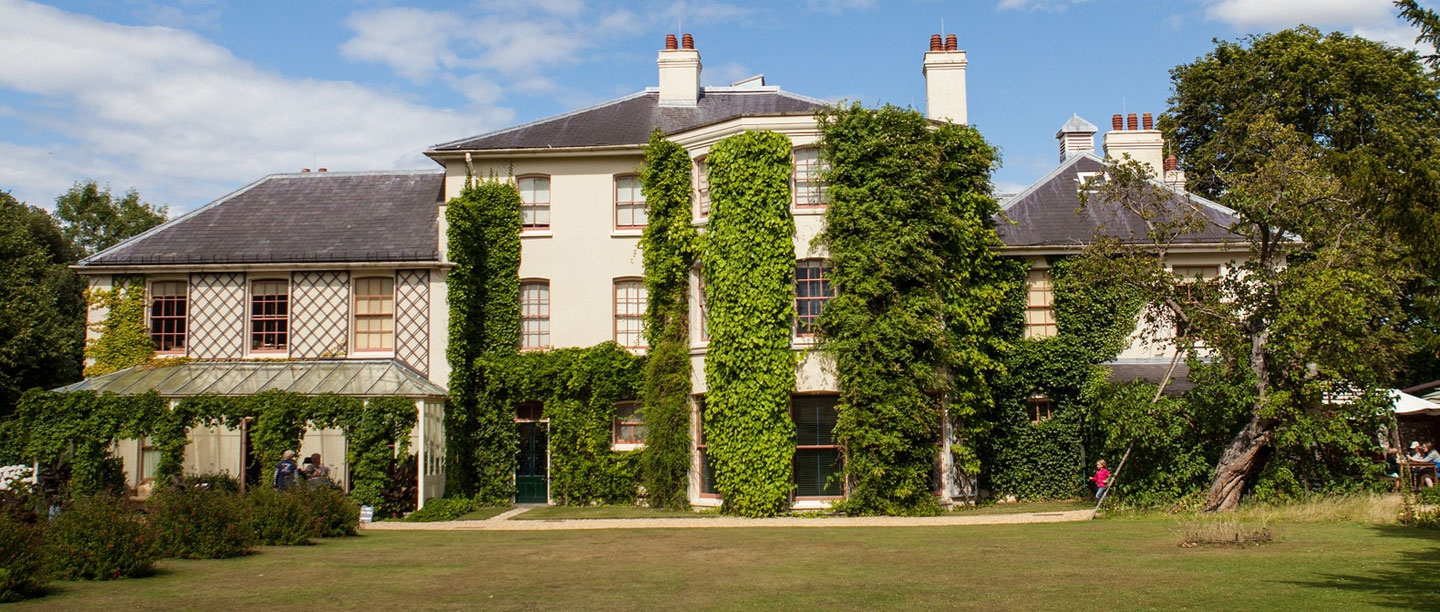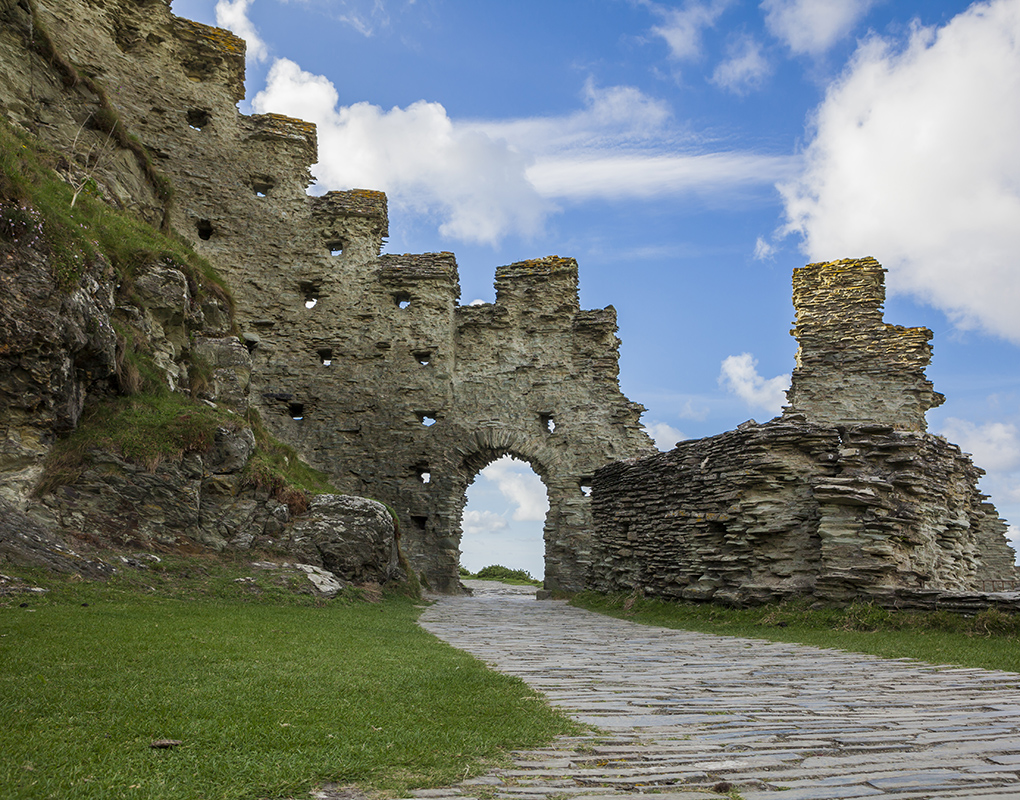
20 Questions Quiz: Literary Links
Test your knowledge of our properties' literary links with our quiz. Click on each question to reveal the answer.
-
1. Whitby Abbey provided inspiration for Bram Stoker’s Dracula. In what year was the novel first published?
Answer: 1897
Stoker was on holiday in Whitby in 1890 when he read about Vlad ‘the Impaler’ – a 15th-century prince (nicknamed Dracula) with a taste for cruelty. Inspired by this story, and by the resort’s rugged coastal landscape, the author set part of his Gothic tale in the Yorkshire town. In the novel, a large dog runs to Whitby Abbey after surviving a shipwreck. The dog, of course, is Dracula in disguise.

-
2. Whitby Abbey was also the home of the first named English poet. What was he called?
Answer: Cædmon
Cædmon lived at Whitby Abbey shortly after its foundation in the seventh century, when it was ruled by the great Abbess Hild. Of the Anglian monastery where Cædmon lived, very little is visible today, although recent excavation has revealed that the site was much more extensive than previously thought: a large number of timber buildings stood on the headland (at least 500 metres of which has eroded into the sea since Anglo-Saxon times) along with an extensive cemetery, now buried beneath the visitors’ car park.
-
3. Which monument is the setting for the climax of Tess of the D’Urbevilles by Thomas Hardy?
Answer: Stonehenge
After committing murder, Tess goes on the run with Angel Clare, the man she loves and wanted to marry. Walking on Salisbury Plain at night, they almost bump into Stonehenge, which is described as ‘a vast erection… rising sheer from the grass’. The next morning they are caught by their pursuers, and Tess is hanged soon after.
-
4. Who wrote the 1937 poem ‘Roman Wall Blues’, about life on Hadrian’s Wall?
Answer: WH Auden
In the poem, Auden's Roman soldier complains, 'Over the heather the wet wind blows, I've lice in my tunic and a cold in my nose. The rain comes pattering out of the sky, I'm a Wall soldier, and I don't know why.' Auden was also a playwright and critic, and won the Pulitzer Prize in 1948 for 'The Age of Anxiety', a long poem written mostly in alliterative verse.

-
5. Answer
Answer: Kenilworth Castle in Warwickshire
Kenilworth tells the story of Robert Dudley's first wife, Amy Rosbart, who was found dead at the bottom of a flight of stairs in 1560. Dudley was the favourite of Elizabeth I, and some suspected foul play. Dudley, so the rumour goes, wanted to marry Elizabeth – and Amy was in the way. Scott's version of the scandal is set in 1575, against the backdrop of Elizabeth's second visit to Kenilworth Castle, when the castle reached the peak of its prestige.
-
6. One of the most well-known books in history was written in Down House in Kent. What was it?
Answer: On the Origin of Species by Charles Darwin
The full title of the book, which was published in 1859, is On the Origin of Species by Means of Natural Selection, or the Preservation of Favoured Races in the Struggle for Life. In it, Darwin set out his theory of evolution, changing the way we think about the world forever. He wrote it in his study at Down House, where visitors today can still see Darwin's original furniture, specimens and scientific instruments.

-
7. The History of the Kings of Britain by Geoffrey of Monmouth linked the legend of King Arthur to Tintagel in Cornwall. In which century was it first written? A 7th century; B 12th century; C 14th century; D 17th century
Answer: B 12th century
In the book, which contains little reliable history, Arthur's father Uther Pendragon, the king of the Britons, falls in love with Ygerna, who is married to the Duke of Cornwall. Uther lays siege to Tintagel, where she is being kept, but because it is 'built high above the sea’, an advisor tells him he has no hope of success. So he uses Merlin's magic to sneak in and seduce Ygerna while disguised as her husband – and the future King Arthur is conceived.

-
8. Which castle did Shakespeare describe as ‘this worm-eaten hold of ragged stone’ in Henry IV, Part Two?
Answer: Warkworth Castle
Several scenes in Shakespeare's Henry IV plays, written in 1597, are set at Warkworth Castle, one of the largest and most impressive fortifications in northern England. Part of its importance lies in its role as the chief residence of the powerful Percy family in the late Middle Ages, as well as the exceptional architectural quality of its late 14th-century great tower.
-
9. Can you unscramble the name of this property, which the diarist Samuel Pepys visited in 1660? UNDERHANDEDLY DONE SAUSAGE
Answer: Audley End House and Gardens
Pepys visited Audley End in 1660. He wrote: 'The housekeeper shewed us all the house, in which the stateliness of the ceilings, chimney-pieces, and form of the whole was exceedingly worth seeing. He took us into the cellar, where we drank most admirable drink, a health to the King. Here I played my flageolette, there being an excellent echo.' He visited the house again several years later.
-
10. Which former Poet Laureate wrote a poem about a merman imprisoned in Orford Castle?
Answer: Andrew Motion
In the late 12th century the fishermen of Orford, Suffolk, supposedly caught a merman in their nets. According to the 13th-century chronicler Ralph of Coggeshall, 'He was naked and was like a man in all his members, covered with hair and with a long shaggy beard.' He was taken to Orford Castle and imprisoned there but 'he would not talk, even when tortured and hung up by his feet'. He was allowed into the sea to swim, and eventually managed to escape. Andrew Motion, who grew up near Orford, wrote about the treatment of the merman in his 1997 poem 'Salt Water'.

-
11. A blue plaque at Campden Grove, London, commemorates the residency of James Joyce. Who did he marry while living here?
Answer: Nora Barnacle
From May to September 1931, number 28B Campden Grove was the home of James Joyce, the Irish author most famous for his 1922 masterpiece Ulysses. While living at the Kensington flat he married his long-term partner, Nora Barnacle, and worked on the manuscript for Finnegans Wake, which was published in 1939.
-
12. Which Romantic poet wrote that at Furness Abbey he found ‘a mouldering pile with fractured arch, Belfry, images, and living trees, A holy scene!’
Answer: William Wordsworth
The English Romantic poet William Wordsworth wrote about Furness Abbey in Cumbria – a place he loved from his childhood – in more than one poem. His travellers' guidebook, Guide to the Lakes (originally published in 1810 and expanded in 1835), helped to make the ruins a tourist attraction. This was further stimulated by the arrival of the railways in 1847. The manor house was substantially rebuilt and became the Furness Abbey Hotel to accommodate the visitors.

-
13. Which resident of 58 Sheffield Terrace, London, commemorated with a blue plaque, had murder in mind when they moved to this grand Kensington address in 1934?
Answer: Agatha Christie
The doyenne of detective fiction lived in Sheffield Terrace with her second husband, archaeologist Max Mallowan, from 1934 until the street was bombed in 1941. She completed some of her best-known Hercule Poirot mysteries at this address, including Murder on the Orient Express (1934) and Death on the Nile (1937).
-
14. The romantic ruins of Netley Abbey reputedly inspired which renowned Georgian writer to pen a mock-Gothic novel?
Answer: Jane Austen
A visit to Netley Abbey near Southampton Water reportedly influenced the setting of Northanger Abbey, completed in 1803 but published only in 1817 after Austen’s death. Visitors to southern England’s most complete surviving Cistercian monastery will recognise the evocative description of ‘its long, damp passages, its narrow cells and ruined chapel… [The heroine, Catherine Morland] could not entirely subdue the hope of some traditional legends, some awful memorials of an injured and ill-fated nun’.

-
15. Which of Sir Walter Scott’s novels features a medieval tournament held at Ashby de la Zouch Castle in Leicestershire?
Answer: Ivanhoe
Most of the structures visible at Ashby today date from the 15th century – but were rendered a picturesque ruin during the Civil War. After Scott’s swashbuckling novel was published in 1819, readers flocked to see the castle – so the owner, Lord Moira, had the remains repaired to create a popular resort and stoke visitor demand even further.

-
16. Which debonair playwright’s birthplace at 131 Waldegrave Road, Teddington is commemorated with a blue plaque?
Answer: Noël Coward
The actor, playwright, director and songwriter was born in this Victorian semi-detached villa in 1899, but the family left his birthplace – then known as Helmsdale – 18 months later. Coward later recalled their departure in verse: ‘An unpretentious abode, Which, I believe, Economy forced us to leave, In rather a hurry.’
-
17. ‘We saw Tilbury Fort and remembered the Spanish Armada.’ Which 1818 Gothic novel, subtitled The Modern Prometheus, features this line?
Answer: Frankenstein by Mary Shelley
In addition to this literary cameo, the striking star-shaped fort guarding the Thames estuary in Essex was the site of Queen Elizabeth I’s well-known troop-rallying speech in which she reputedly proclaimed, ‘I know I have the body of a weak and feeble woman, but I have the heart and stomach of a king.’

-
18. Blue plaques are densely clustered along Cheyne Walk on London’s Chelsea Embankment, including one at number four commemorating the novelist George Eliot – which was a pseudonym. What was their real name?
Answer: Mary Ann Cross (née Evans)
The author of Middlemarch and Silas Marner wrote largely under the pen name George Eliot, to avoid attracting attention to her private life. After marrying in 1880, she and her husband John Walter Cross moved to Chelsea, where she died later that year.
-
19. At which castle can you visit this Fountain Garden, where Love’s Welcome by Ben Jonson was first performed during the 1634 visit of King Charles I?
Answer: Bolsover Castle
After William Cavendish, owner of this magnificent site in Derbyshire, completed the interiors and grounds of the Little Castle, he wanted to show it off to King Charles and Queen Henrietta Maria. During their visit in 1634, Jonson’s masque, written especially for the occasion, was performed in the Fountain Garden, which was designed around the statue of Venus – goddess of love and pleasure – emerging from her bath.

-
20. The Embassy of Israel in Kensington occupies a building bearing an unusual brown plaque commemorating which author, who rebuilt the house that he called his ‘principle pleasure’ in 1860–62?
Answer: William Makepeace Thackeray
The bestselling author of Vanity Fair rebuilt his new home at 2 Palace Green, bought with the proceeds of his writing, in extravagant style. The red-brick neo-Georgian mansion was, he wrote, ‘One of the nicest houses I have ever seen.’ He died at home on Christmas Eve 1863.



